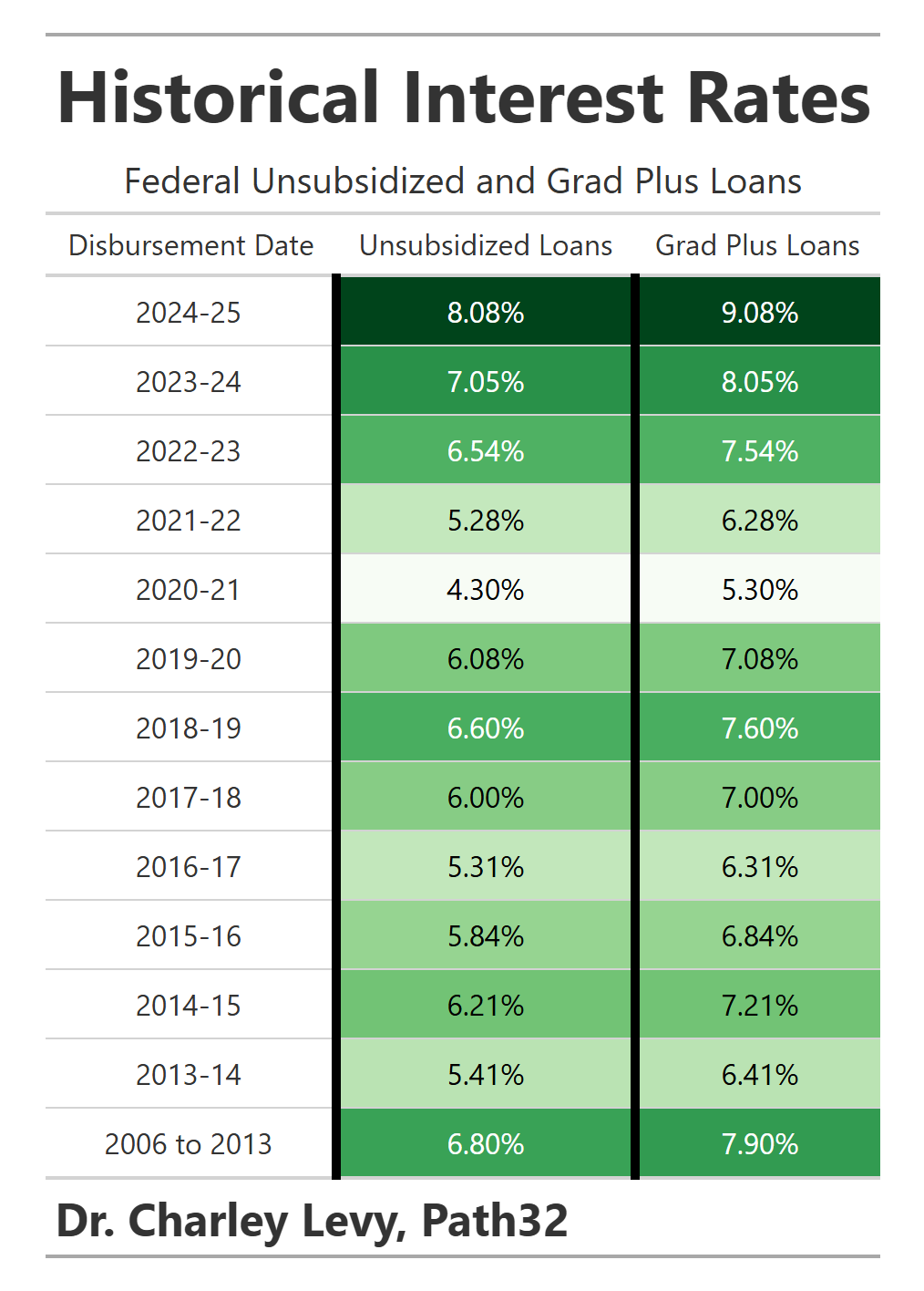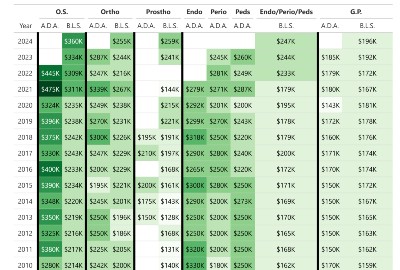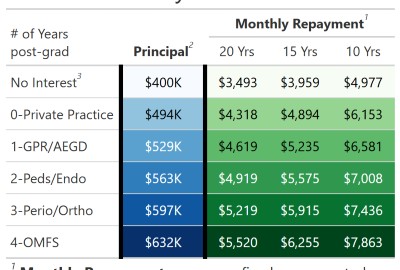Resource Article
Interest Rates over the last 20 years

When it comes to financing dental school, most students rely heavily on two types of federal student loans: Federal Unsubsidized Loans and Federal Grad PLUS Loans. Each serves a crucial role in helping students cover the substantial cost of dental education, and both come with fixed interest rates that are set annually. Over the past two decades, these interest rates have fluctuated significantly—often reflecting broader economic conditions and federal policy.
Federal Unsubsidized Loans: A Closer Look
Federal Unsubsidized Loans are available to both undergraduate and graduate students, including those in dental school. Unlike subsidized loans, interest begins accruing as soon as the loan is disbursed. For dental students, the typical annual borrowing limit under this program doesn't fully cover tuition and living expenses, which is where Grad PLUS Loans come in.
Looking back, the interest rate on Unsubsidized Loans was 6.80% from 2006 to 2013, before shifting to a variable structure tied to the 10-year Treasury note. Since then, rates have moved up and down with the market:
- Lowest point: 4.30% in 2020-21 (likely due to federal rate cuts during the pandemic)
- Steady climb: From 5.28% in 2021-22 to a peak of 8.08% in 2024-25
This recent spike underscores the increasing cost of borrowing for current students.
Federal Grad PLUS Loans: Filling the Gap
Grad PLUS Loans are designed to help graduate and professional students borrow beyond what the Unsubsidized Loan allows, often covering the remainder of tuition and living costs. These loans come with a higher interest rate.
Over the past 20 years, Grad PLUS Loan interest rates have generally been about 1% higher than their unsubsidized counterparts. Like Unsubsidized Loans, the rate held steady at 7.90% from 2006 to 2013 before transitioning to variable rates. Key highlights include:
- Lowest point: 5.30% in 2020-21
- Climbing trend: Peaking at 9.08% in 2024-25
The current 9.08% rate is the highest in over two decades, presenting a significant financial burden for today’s dental students.
What This Means for Dental Students
The cost of dental education continues to rise, and with it, the interest rates on the loans that most students depend on. In just the past four years, rates have nearly doubled, drastically increasing the long-term cost of education.
As a practicing dentist and someone passionate about guiding future professionals, I encourage all dental students to:
- Understand your loan terms before borrowing
- Explore federal repayment programs (like income-driven repayment and Public Service Loan Forgiveness)
- Consider refinancing options after graduation if interest rates drop
By staying informed, you can make smarter decisions about financing your education and protecting your financial future.








